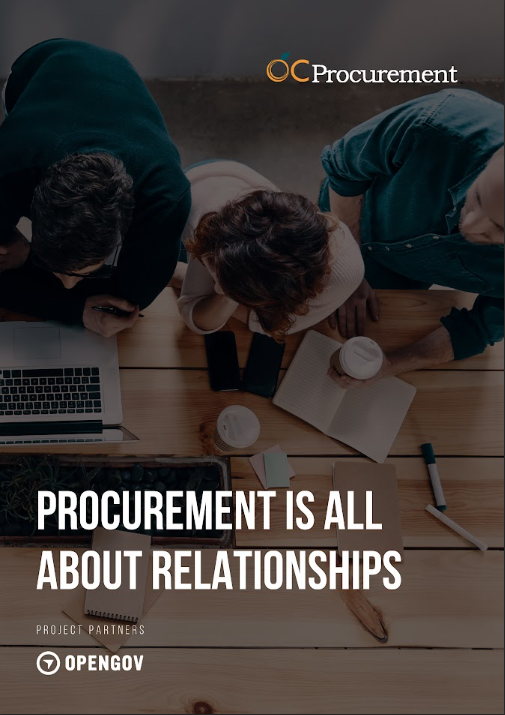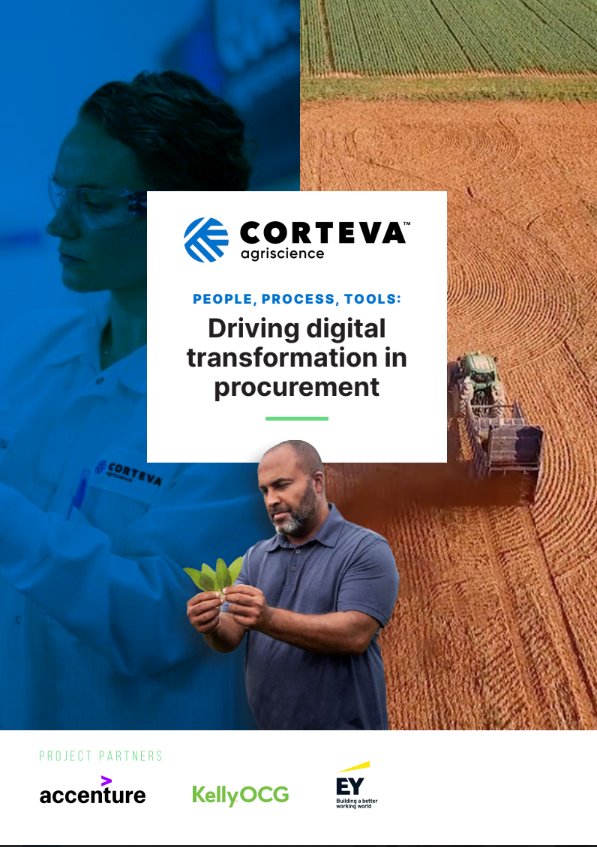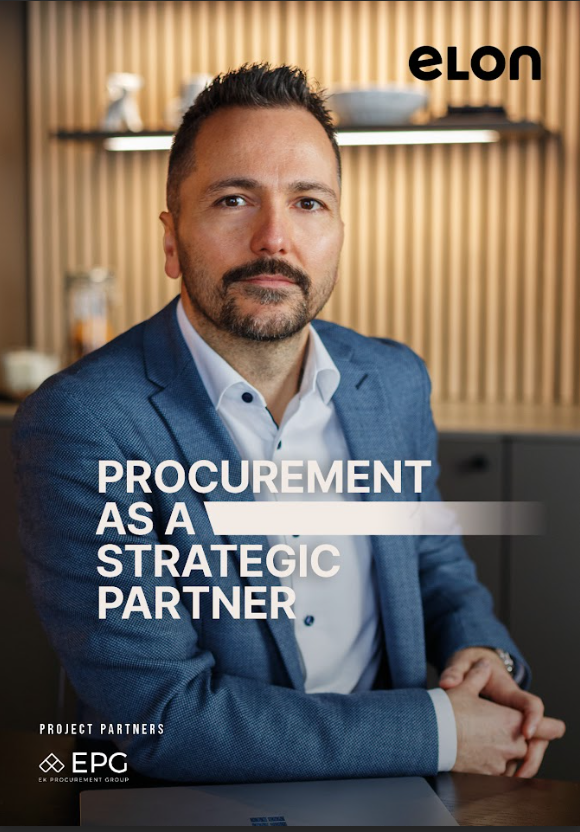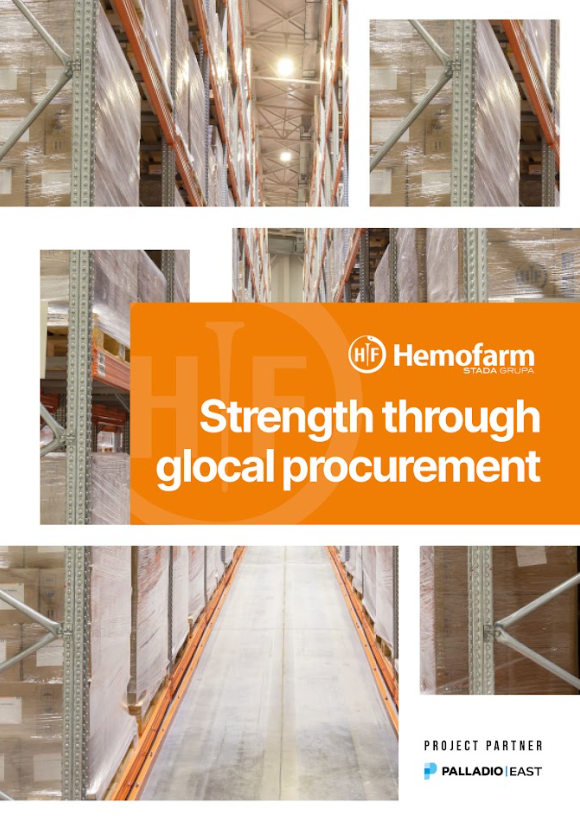Procurement matters to an organisation. It always has. It’s the how and the why that has significantly evolved over the last two decades. Whether it’s a financial organisation looking to diversify its product offering to a rapidly evolving customer base or a public sector body in need of more accountability and transparency in its use of public funds, procurement is the key to achieving far more than monitoring the bottom line.

If the past 12 months have taught us anything, market volatility and uncertainty is something that business leaders need to prepare for. Once again, it’s procurement that’s the key here.
Take Air Canada, Canada’s largest airline and the largest provider of scheduled passenger services in the Canadian market, the Canada-U.S. transborder market and in the international market to and from Canada. Together with its Air Canada Express regional partners, Air Canada carried over 51 million passengers, offering direct passenger service to nearly 220 destinations on six continents. The airline industry is notoriously volatile and so Air Canada needed to ensure that it has a resilient, agile, centralised and ‘best in class’ procurement function in order to continue operating to the best of its abilities and indeed serve those 51 million passengers each year.
Gilles Neron, Managing Director, Strategic Procurement, at Air Canada, fully understands the value in which procurement has in managing the complex ecosystem of the airline. He also acknowledges that while procurement, on a broader scale, has evolved incredibly so that for the longest time it was often boxed in with supply chain and logistics.
“Procurement is well positioned to address multiple corporate needs but it has always been misunderstood over the years,” he says. “People were talking about supply chain and supply chain including procurement, but with procurement defined more as purchasing. Now you’re adding the logistics and all those aspects. People were a bit confused.”

“Procurement is needed for the governance over the Source-to-Pay (S2P) activities, for cost, control and transformation. Procurement is a great tool and philosophy to manage external spend, suppliers and having greater spend visibility.”
Like many large organisations, procurement at Air Canada was fairly decentralised. In recent years the company partnered with SAP Ariba and Accenture to embark on a significant procurement transformation journey, one that would indeed centralise the function, enable greater governance and optimise all S2P activities. Procurement is now split by category supporting the various branches of the organisation and a centre of excellence was created within the procurement teams to realise governance, process standardisation and implement technology.
For Neron, while this was a journey of procurement transformation, it was also one of procurement becoming a real brand strategy enabler for Air Canada.
“The whole group has shifted towards becoming a supply chain organisation,” he says. “Getting a complete picture takes time. It is not easy to implement, but I’m telling you when we got over the barriers, people saw the real viability and the real benefit of having strategic procurement teams centralised together.
“And that means we can go forward and look at things like SRM, or how we can support a different branch, and so- on. The organisation needs to be very close to the branch and this journey has helped our teams become recognised as true SMEs.”
Transformation is nothing new and while there are countless organisations in the world currently undergoing their own transformation journeys, sponsorship and corporate buy-in is still very much the first ‘win’ that needs to be achieved. Neron has already spoken of how the business has come to recognise procurement for what it is and what more it can be, but he will also admit that procurement needs backing in order to truly succeed. Here he speaks of both a key relationship with the CFO (arguably one of the most important relationships and closest aligned to procurement) and how it helps ‘sell’ the value of what procurement can be.
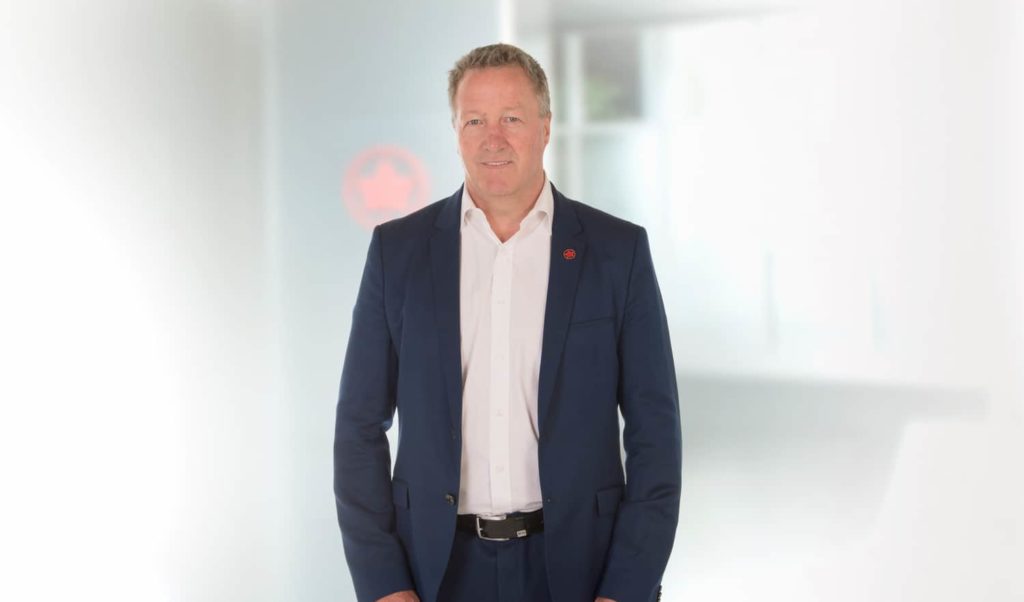
“It’s important to have a direct relationship with the CFO because you’re getting the benefit to understand how the business is performing and what you can bring,” he says. “I also think that it’s important, even if you’re centralised, to have direct contact with the different Business Units’ heads in order to understand what the needs are and what you have to do to support them to achieve their objectives.”
He continues: “My selling point has always been: one system, one process, one technology. Being a big organisation like any other big organisation, people work in their own way and there’s no standard process. By doing so, we will be able to automate, reduce manual work, standardise the process across the different business units and improve the turnaround time.
“Getting a better control of our spend, the what, where with who and how much, is ultimately what most financial people will look at. Consolidating spend or reducing leakage means bringing more savings to the corporation, having visibility is key to that.”
So with the backing of the CFO, the Business Unit leads and of course the executive board, now it’s time to identify the road ahead. Planning a roadmap, outlining the key goals and how exactly you plan to get there. Sounds simple right? Neron laughs as he acknowledges fantasy versus reality when it comes to identifying a strategic roadmap. It is here where Accenture played a key role in working with Air Canada and asking the right questions, looking at examples of best practice and looking at what Air Canada procurement was and wasn’t doing.

Neron firmly believes that you must question whether you have the right team in place, whether the timing is right or whether you can get the budget available for a major shift in infrastructure. “Trying to do this alone is just not the right thing to do,” he says. “You have to find the right partner for you that fits with your culture and understands the steps that you want to take and ultimately where you want to be as an organisation.”
Air Canada partnered with Accenture for its S2P transformation and leveraged its leading market knowledge, its practices and expertise on S2P platforms. SAP Ariba was the selected technology solution to integrate all S2P activities across Business Units.
“Having both Accenture and Ariba, we’ve really been able to achieve our vision and move forward in a way that is hard to imagine without them,” he says. “The Accenture transformation pitch in reality was more about people and process than technology. It wasn’t just a system integration. They provided guidance and coaching on the transformation journey, opening up our eyes to different ways of working, supporting our culture and our vision.
“We’ve maintained a great relationship post-deployment. When we worked together, Accenture were considered as a true extension of Air Canada.”
With technology comes risk. Yes, there are technology solutions that will realise savings, efficiencies and innovation, but it’s an expensive journey. Get it right and the ROI will be incredible. Get it wrong and what was already a costly process will suddenly rack up costs two to three times more than the initial investment. This is an interesting challenge particularly at a time of accelerated digitalisation of procurement as it begs the question; will we fall behind if we don’t invest in technology?

“You have to come back to the basics of your implementation and ask: why are you doing it? What are the benefits you’re looking for?” says Neron. “Accenture or SAP Ariba, they’re the partner we pick and they help us keep our mindset on that. As mentioned previously, my goal was to get one process, one standard, one technology.”
The fact of the matter is, in procurement money talks. Procurement has indeed evolved beyond simple cost saving but it still remains a core part of the function’s value. Procurement has been given free reign to bring about real change, implement new technologies, foster a new culture and ultimately deliver key savings. So when called upon, procurement should be able to provide real, tangible results that will show the fruits of its (and the wider organisation) labour.
“The first benefit is having a system that supports our vision,” asserts Neron. “The technology will be there to evolve with the corporation going forward. That is the first benefit you’re looking for. The savings will come after. Today we have hundreds of suppliers in place and hundreds of millions in spend. But our vision is to have 2000 suppliers and $2B spend within our S2P platform.
“We’re targeting both North American and international suppliers within the system and I can guarantee we’re going to be there and it is going to be a big success for us. At the beginning, it takes time to see those benefits, because people are learning the practice of that technology. But at the end, you have to be able to get the team in-house to simplify the process and see what the best is for you and accommodate that going forward and you see the real benefits.”
Suppliers are vital to the procurement and supply chain ecosystem and significant work must go into the relationships that businesses have with them. As Neron highlights, suppliers will be key to the future success of Air Canada and for procurement. The new system in place will allow Air Canada to increase the volume of interactions it has with its suppliers, engage with them in an entirely new way and realise the true potential of these significant relationships.
“They need to know about the confidence that we have in them and the importance of the relationship, but they also need to know where they will sit as part of this transformation,” he says. “The pandemic has shown that key relationships with the partners are extremely important and that helped a lot to further support the transformation, cash flow management and supply continuity.
“Having that relationship is so important as well in that you’re able to support smaller fragile industry partners for survival. We have a supplier summit where we find solutions together. In our industry the number of suppliers is limited and to have real partnerships is extremely important. As much as a supplier is trying to define their product and sell it to you, you have to do the same thing on your side. Define your vision, explain your goals, and showcase your plan. This is key if you want to get them as a partner moving forward. Partnership is not a one-way discussion.”
It’s all well and good talking about change, implementing new systems, embracing digitalisation and a new supplier relationship model, but if the team around you is not engaged, empowered and fully supported by leadership then it will forever be an uphill battle moving forward.
Neron is blessed with a team around him full of individuals who understand the change, lead with purpose and see an opportunity to improve and run with it. For him, he admits, the implementation of technology would not have been possible without them.

“Remember, we built our own centre of excellence team within the strategic procurement team,” he says. “That’s the team that led the transformation with a continuous improvement, technologically savvy, and customer service mindset.
“This team really works comfortably with all our branches. That, in my point of view, is the key to success. If you don’t have that and you try and leave it within the consultant and you try to implement and apply that to the people in-house without having the right support in-house, it’s just a question of time in terms of failure.
“That is a key success for us here at Air Canada. Yes, it’s good to have the best vision and implement the best technology in place, but having a talented team working in that manner, well that’s everything.”

